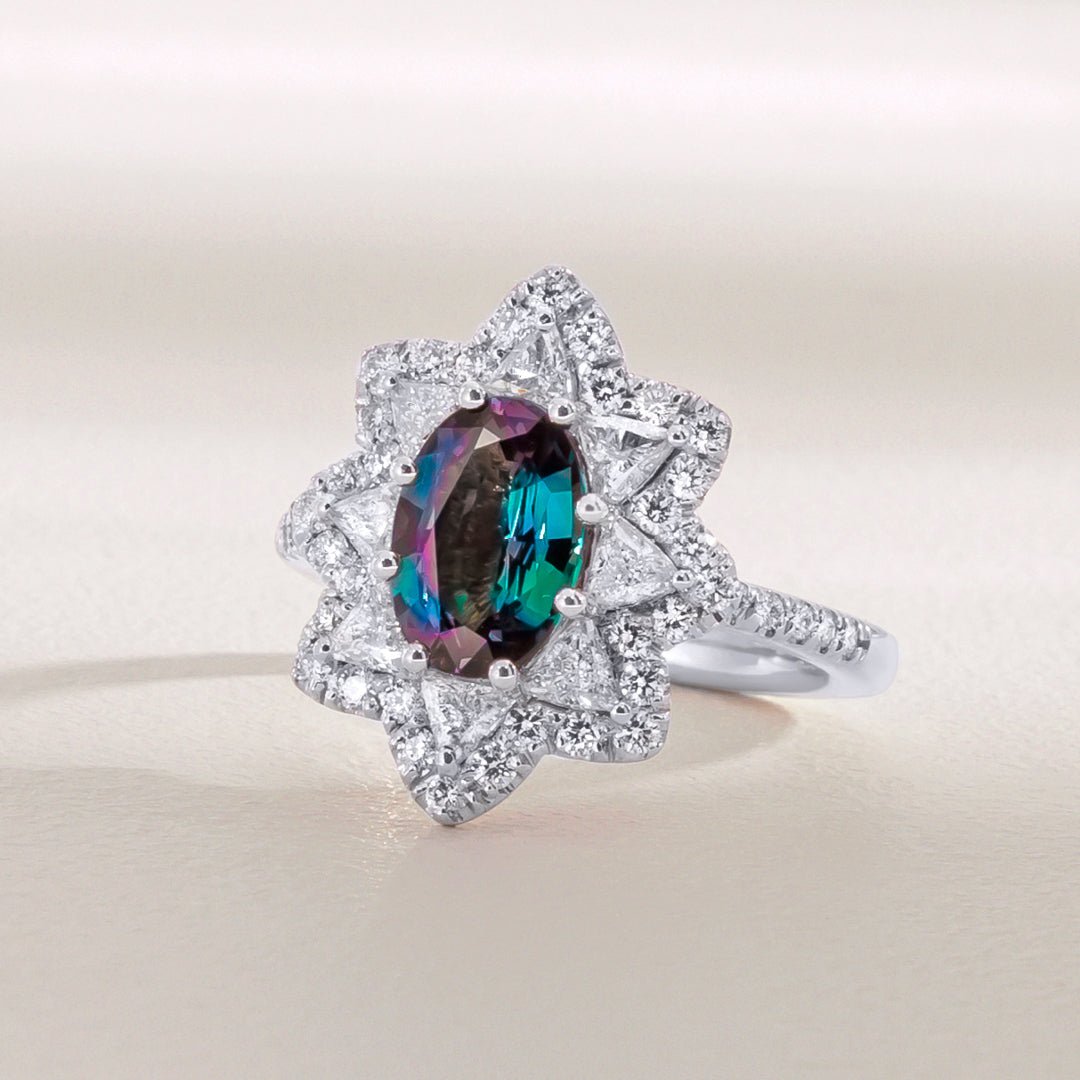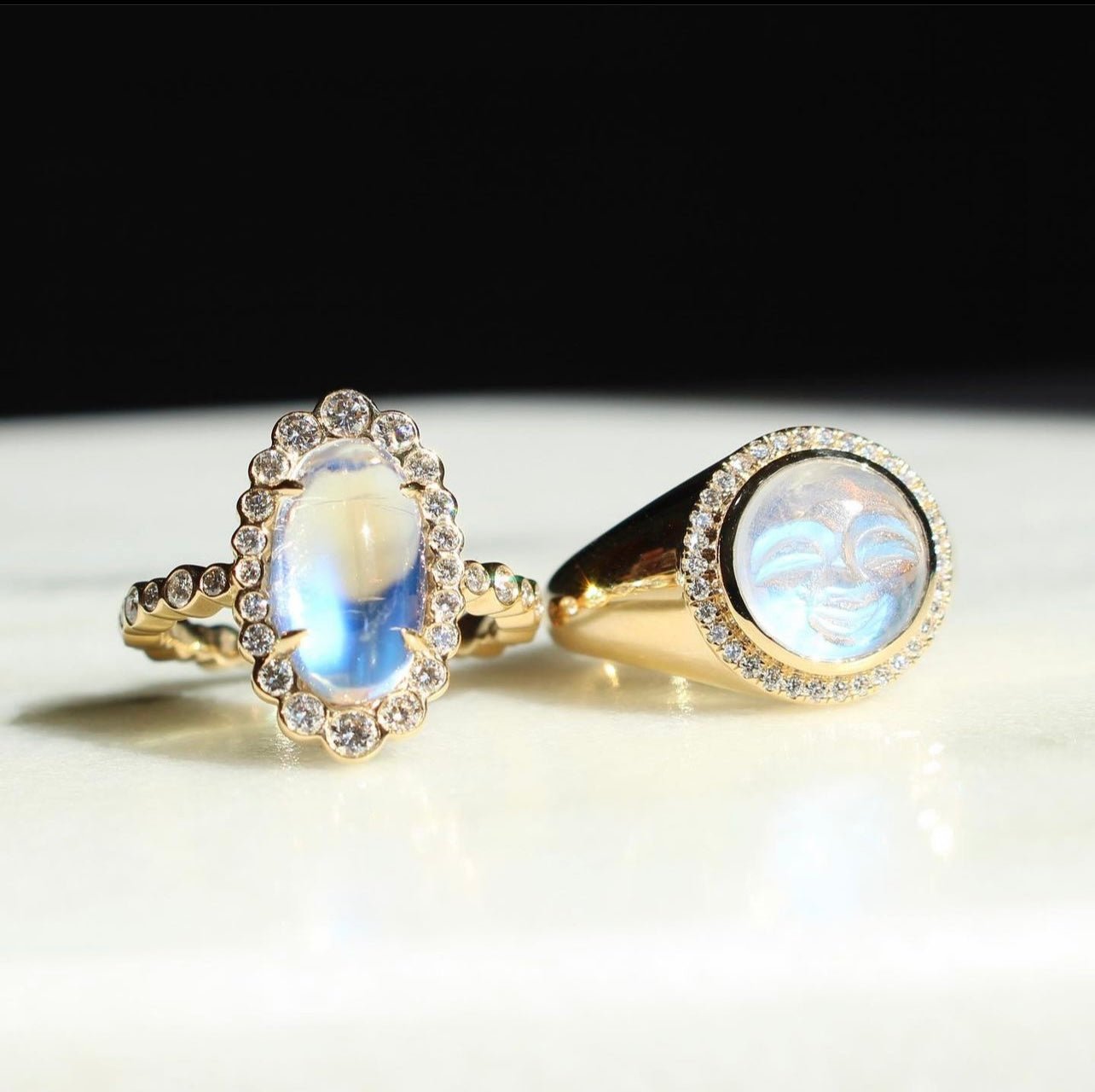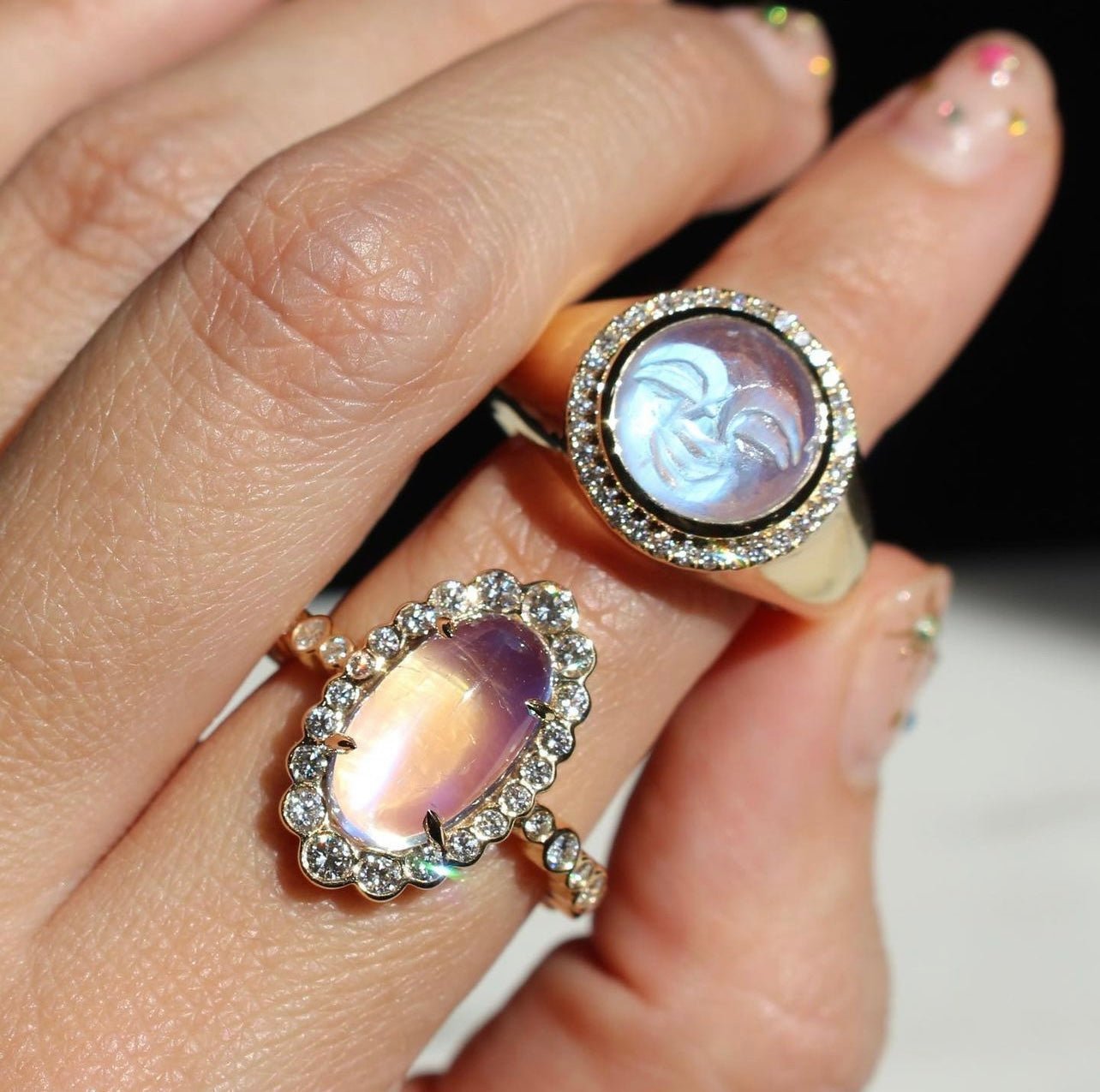Sometimes, looks can be deceiving. An untrained eye might not be able to pick up subtle differences in gemstone appearance that can drastically alter how much a piece is truly worth. However, anyone can look at alexandrite and understand its value.
You don’t have to be an expert to be enthralled by the dazzling and magical properties of this ultra-rare gem. Alexandrite is one of the jewelry world’s best-kept secrets — until now.
At Mark Henry Jewelry, our driving passion is alexandrite, and we love sharing it with our customers. We want you to experience the same luxury and head-turning gazes as the royalty of the past.
So, what exactly sets alexandrite apart from the others?
Well, to begin, it is a color-changing gemstone that alternates between a beautiful green shade and a wonderful, deep red. In the daytime, alexandrite appears to be similar to an emerald, but under minimal or no lighting, it suddenly transforms into a ravishing ruby red. That is only the surface (literally) of what alexandrite has to offer.
Let’s break down the price tags of these gems and explain why they have been so elusive for so long. Allow us to introduce you to this universe, previously unavailable to the masses. Once you appreciate an alexandrite for more than just its beauty, you enter a whole world of exotic gems.
Brief History
Before we dive too deeply into the assets of alexandrite, it is important that we outline where it comes from, what purpose it has served, and how it was used throughout history. You’ll be wearing a living piece of the past, and this makes it even more valuable.
In the 1830s, Russia’s Ural Mountains housed all known alexandrite. The precious gem was discovered by mineralogist Nils Gustaf Nordenskoild’s workers. Upon entering the highest social circles, it was immediately well-received by the nobles of the time. The extravagant greens and reds of the gems were alluring to the richest buyers, and it was highly sought after.
Alexandrite is named after the Czar Alexander II of Russia, who was only a child but already respected. Nobility proudly wore alexandrite for decades, spilling into its popularity in the 20th century as well.
Other Discoveries
Over the years, alexandrite was discovered across the world. This opened up mining possibilities and made the gem more largely accessible. However, it still held a certain status that signified the rich and noble. It was a symbol of power and beauty.
The Ural Mountains have minimally active mines. Most of the modern mining of alexandrite comes in Brazil, Sri Lanka, Myanmar, and Zimbabwe, among other sources. Brazilian alexandrite is the most highly sought-after kind, and we harvest our gems from that very region. This alexandrite supply has more gallium than aluminum in it, making for a stunning display of color.
Alexandrite from Zimbabwe may be too small to adequately use, and Sri Lankan gems don’t have the same blue-green tints as their Russian counterparts. Our Brazilian alexandrite is resourced ethically and sustainably from a family-run mine. It is of the finest quality and perfect in size and character for our jewelry.
What You Pay For
With alexandrite, you get more than what you pay for. There is always something new to be discovered, a new perk of the gemstone you think you know everything about.
Let’s break down exactly what makes this gem so unique:
Density
Alexandrite falls at an 8.5 on the Mohs Scale of hardness. This means that it is fairly strong and durable, and good for use in jewelry. You don’t have to worry about placing it in rings or bracelets because it can hold up through everyday use and slight wear and tear.
Unlike gems that are low on the Mohs scale, it won’t crack and dirty easily (and cleaning is useful if done when needed).
Cat-Eye Effect
Alexandrite belongs to the chrysoberyl mineral family. This is where it gets its “cat-eye” effect. This occurs when the gem is cabbed, a specific type of cut. If you can find an alexandrite with this chatoyance, where light is reflected in a line on the stone, you have stumbled upon something truly valuable and rare.
Sizing Impacts Price
Now, we can look a little more closely at exactly how alexandrite’s price tag is determined. Color change percentage comes first. The second most important determinant of cost is how big your gem is.
In general, alexandrite is mined in small amounts. Since it has a minimal supply and is so rare, to begin with, a lot of alexandrite is sold second-hand in larger sizes. Even if the pieces are used, if they are antique, they can be highly valuable and expensive. Most alexandrite you find that is new will be under five carats.
In fact, the largest piece of faceted alexandrite to ever be mined sits in the Smithsonian Institution and comes in at a whopping 65.7 cts. It was found in Sri Lanka, but such an event rarely occurs. As you can tell, when it does, the gemstone isn’t feasibly up for sale — it is housed in a museum for its wonders to be enjoyed by everyone.
Alexandrites that are 1 ct. can go for prices ranging from $500 to $30,000 depending on the strength of color change, clarity, and properties like chatoyancy. Once you dip into alexandrite that goes over 1ct., you’re looking at price tags closer to $40,000.
To put things into perspective, a 21-carat Russian alexandrite gem was sold at Geneva Magnificent Jewels for $1.325 million Swiss Francs in 2014. It was originally priced somewhere between $450,000 and $650,000 Swiss Francs. This just shows the sheer worth of alexandrite and the deal you are getting for smaller pieces.
Beware of Bargains
You may search through the internet or at a gemstone convention and believe that you’ve found a great steal. Maybe the alexandrite piece is half off, or maybe its price tag barely resembles what we’ve outlined here. Before you go ahead and swipe your card, do a bit more research. Not all alexandrite on the market is real.
Synthetic Alexandrite
There are two basic types of man-made alexandrite: synthetic corundum and synthetic spinel. Both of these options mimic the color transitions of alexandrite and can fool the naked eye. However, synthetic spinel is more of a green to red change, while synthetic conundrum can sometimes appear to go from gray-blue to purple.
The man-made productions are quite sneaky. Look into the refractive index of each if you can, and ask for help if you don’t know how to find this information. Both real alexandrite and synthetic conundrum have double refraction, but conundrum has an RI of 1.762 to 1.770. Real alexandrite’s RI only goes to 1.755.
If you don’t mind purchasing a stone of lesser quality, then synthetic options may be for you. The real deal, authentic alexandrite is much more durable, easier to clean, and well worth a larger price. Another option is going for a color-changing sapphire and garnet. Although these are not quite as valuable as alexandrite, they are available if you are adhering to a particular budget.
You are not just purchasing for the sake of appearance, but you are investing in a piece of history and excellence in quality. You are also more likely to purchase from an ethical source with safe mining and fair mining practices when you buy from a real seller.
The Mark Henry Alexandrite
As we mentioned before, Mark Henry Jewelry is committed to selling, designing, and distributing only the best alexandrite. We take great pride in the pieces we offer, and we like to cut and facet them in unique styles that you can’t find elsewhere. We understand the true, irreplaceable value of alexandrite; all of our designs reflect that in their beauty.
We never take this gem for granted.
Just look at our Solitaire Round Alexandrite Halo Stud Earrings. With an 18kt gold metal base, these earrings show off prized pieces of .44ct. alexandrite within their .16ct. petite-diamond halo. They can go with any outfit (due to the color change), and they are great to dress up or down. Currently situated at $4,400, this pair of earrings is reasonably priced and superbly made.
What’s Next
If you are enticed by this new knowledge of alexandrite, you’re at the right place. Discover our expansive alexandrite collection for stunning earrings, bracelets, necklaces, broaches, rings, and more.
It is always best to consult with a jeweler or a gemologist for specialty questions. This is one of the reasons why we keep our free chat feature available at the bottom of our website page. We can always put you in the right direction, no matter your query, and are more than happy to help you find the gem of your dreams.
We hope to pass our alexandrite appreciation to you.
Sources:
Alexandrite Value, Price, and Jewelry Information | International Gem Society
How much will a typical one carat alexandrite gemstone cost | Alexandrite



Needed help for my late father’s ring..he actually bought in the port of Alexander